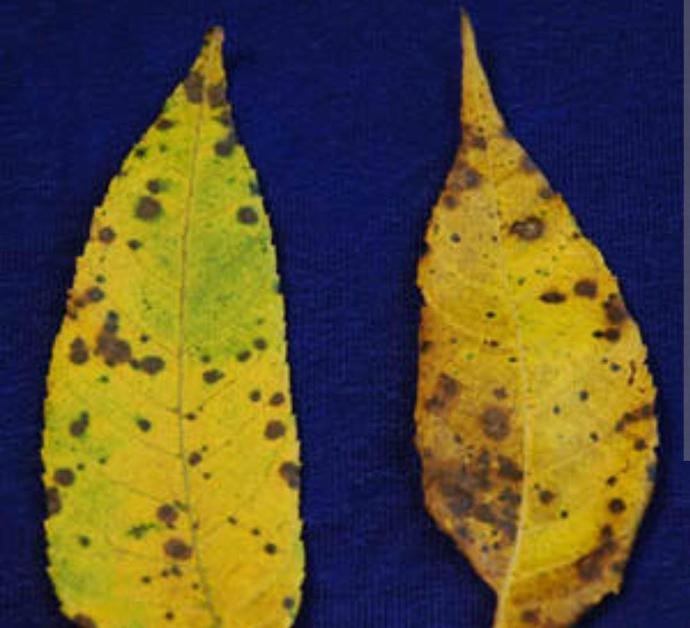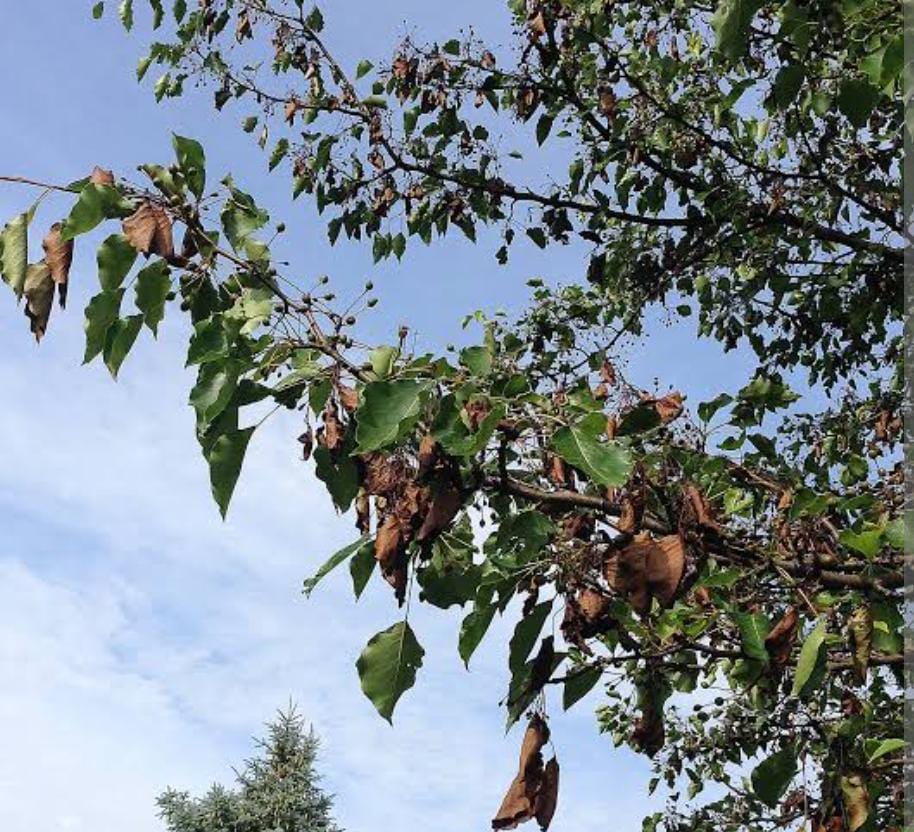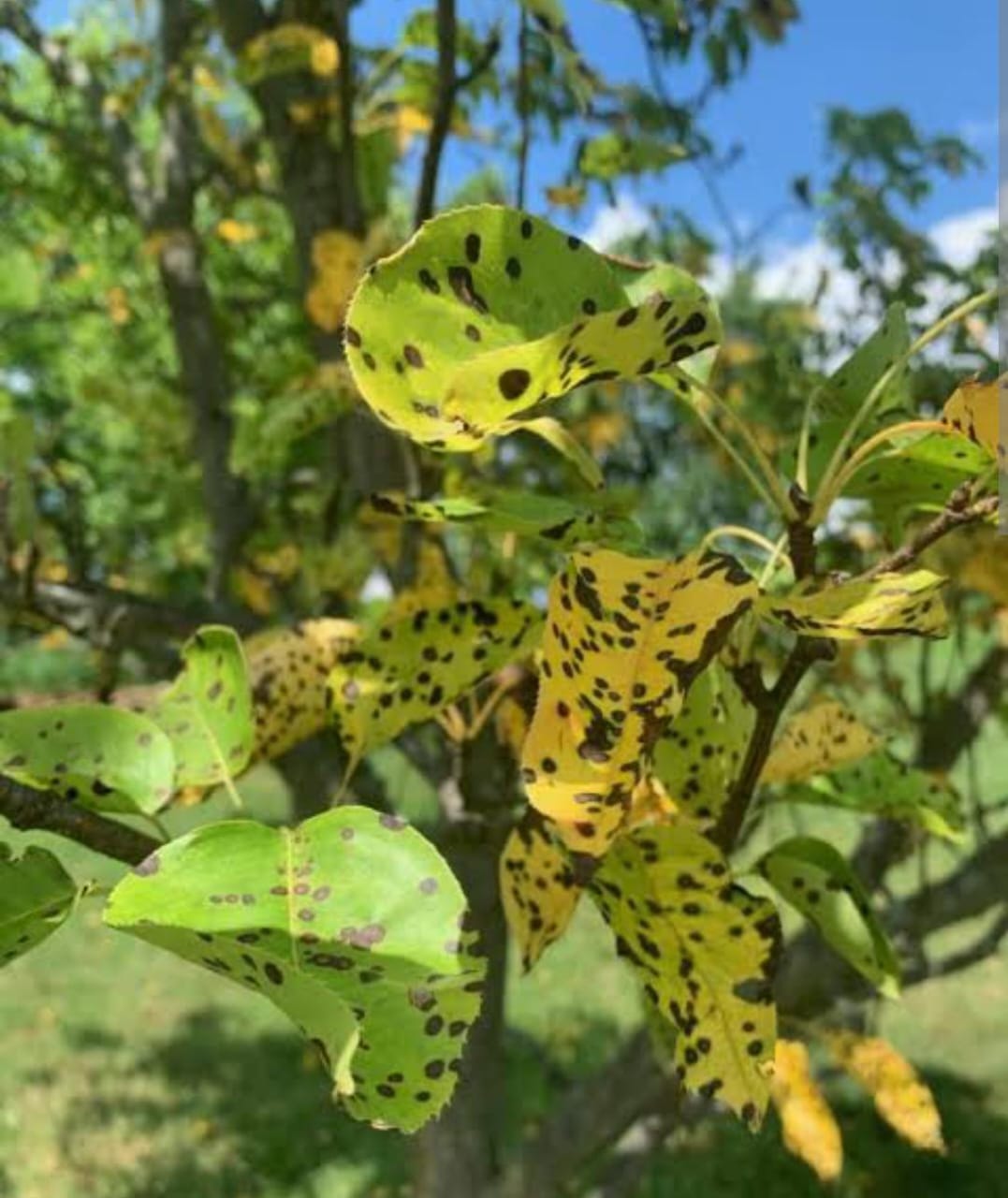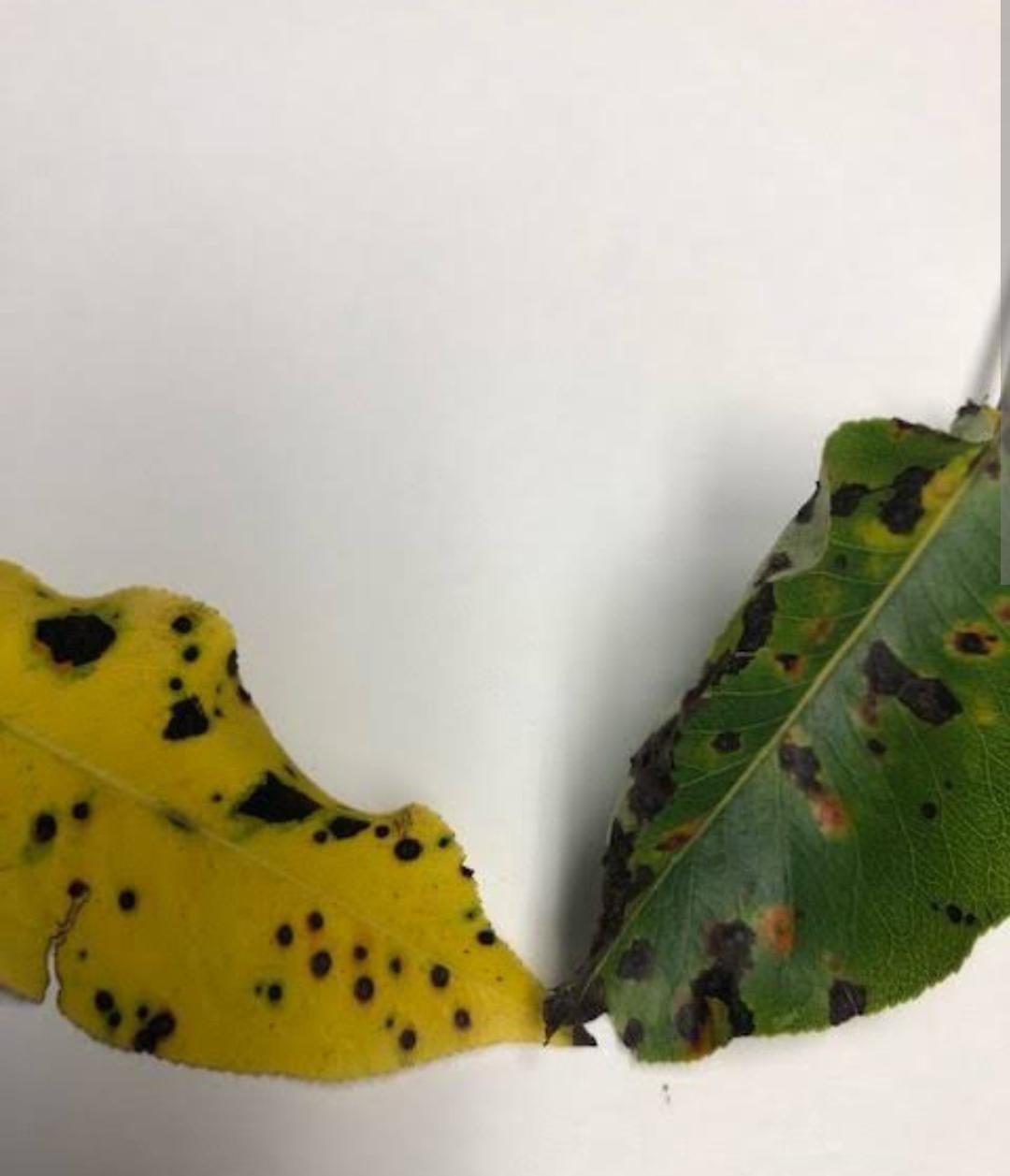Bradford Pear
Bradford pear trees, 30-50 feet tall in Zones 5-9, exhibit fast growth in well-drained soil and full sun. Known for their ornamental value, Bradford pears produce non-edible fruits.
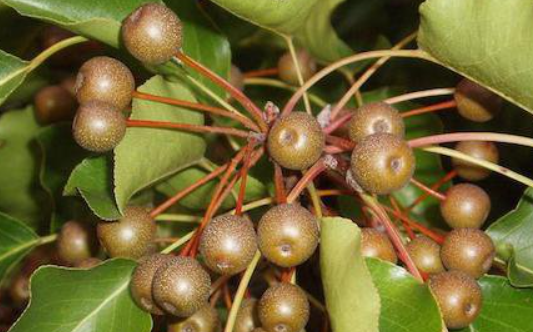
Habit
Tree
Height
12-15m
Growth
Fast
Soil
Loamy, well-drained
Shade
Full Sun
Moisture
Moderate
Edible
No
Medicinal
No
Origin
China
Climatic Condition
Temperate
Temperature (°)
10-25°C
Humidity (%)
60-75%
Potting media
Mulch, compost
Fertilizers
10:10:10 NPK
Watering
Regular
Plant Weight
N/A
Flowering Time
Early spring
Soil Ph level
6.0-7.5
Water Ph level
6.5-7.5
Soil EC
Low
Yield Per Plant
Ornamental use
NPK ratio
10:10:10
life Span
15-25 years
Health Benefits
Air purification
Suggested Grow Media or Potting Mix ?
60% loamy soil, 20% compost, 20% sand
Suggested Fertigation/Fertilizers
Fertilize every 6 weeks with a balanced, slow-release fertilizer.
Common Diseases and Remedies
Fire blight, Leaf spot.
Burt looking leaves,Dead leaves., Black or brown spots, Reddish centers.
Remedies:Remove Inflected Plants, Spraying of Neem oil.
HEALTH BENEFITS
· No significant medicinal benefits; some parts may be toxic.
· Used in traditional remedies for minor ailments, but not widely recommended.
What Is An Bradford Pear ?
Pyrus calleryana, also known as Callery Pear or Bradford Pear, is a type of pear tree in the Rosaceae family that is native to China and Vietnam. Best known for its "Bradford" variety and unpleasant odour, this variety is widely grown throughout the United States and is increasingly considered an invasive species. Bradford pear and its related variety, Pyrus careriana, are considered invasive species in many areas of eastern and midwestern North America, displacing many native plants and trees. In the north-eastern United States, wild curry pears can form widespread, nearly homogeneous stands in old fields, roadsides, and similarly disturbed areas. The spread of this species outside of human cultivation was first observed in his 1990s, and by the late 2000s, curry pears had spread widely and were found in habitats ranging from wetlands to forests.

What Are The Different Types Of Bradford Pear ?
1. Bartlett (or Williams) Pear
If you want a really juicy pear, this is the perfect choice. Both red and green Bartlett are among the sweetest pears available. Bosc pears: These pears are wonderfully crunchy and have a delicate sweet flavour that perfectly resembles the typical pear flavour.
2. Callery pear (Pyrus calleryana Decne vitra.)
It is a species of Asian ornamental pear, with several varieties planted throughout the Southeast. Varieties include 'Bradford', 'Chanticleer'/'Cleveland Select', 'Autumn Blaze', 'Aristocrat',

How to Care for Bradford Pear ?
1. Location
Bradford Pear is called Pyrus callerya in Korea and China.
2. Sunshine
Bradford Pear grows best in full sun, but will also tolerate partial shade. Requires low to moderate fertility. Tolerates most soil types and conditions, including occasionally wet soils and drought. It is also resistant to pollution.
3. Soil
Bradford pear grows best in full sun, but can also tolerate partial shade. Requires low to moderate fertility. Tolerates most soil types and conditions, including occasionally wet soils and drought. It is also resistant to pollution.
4. Hydration
Bradford pears are drought tolerant plants and do not require additional watering unless they suffer from prolonged drought due to heat. Like any potted plant, Bradford pears need watering when young and during dry periods. Potted plants typically require 1 inch of water per week.
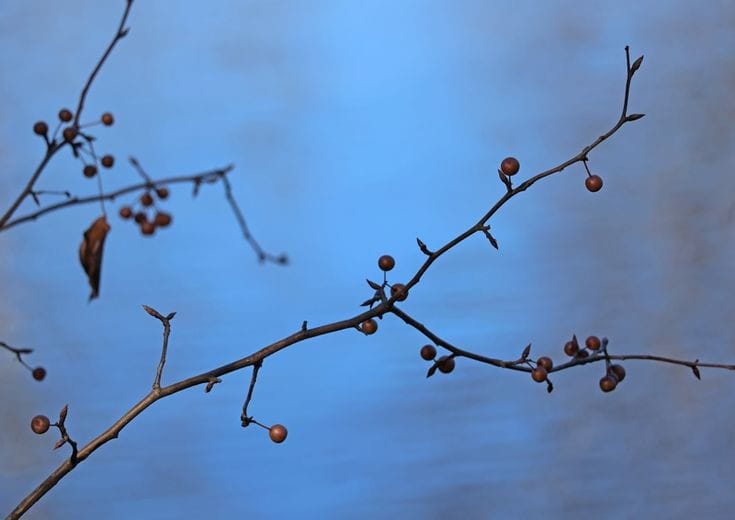
5. Nourishment
Do not feed Bradford pears with fertilizers high in nitrogen. It may have many leaves but not many flowers. Look for fertilizers that have low nitrogen content compared to other nutrients. Do not fertilize after early fall, as growth may increase just before winter.
6. Issues
Bradford Pear Trees Have Weak Branches People who live among many Bradford pear trees see the same thing every storm: lawns, roads, and sidewalks strewn with fallen branches. I'm used to it. This problem is due to weak unions in the industry. The limbs become thinner and have no permanent connection to the torso.
What are the Benefits of Bradford Pear ?
Captures carbon and particles, reduces heating and cooling costs, and improves stormwater performance. These services are important to our well-being, but in the case of calla pears, they are not the reason these species continue to grow and reproduce

FAQs About Growing Bradford Pear
1. Are Bradford pears good to eat ?
Pear trees should be able to produce edible fruit, but the fruit on Bradford pear trees is not edible. Humans can't eat it, and worse, it can be toxic to dogs. Dog owners who have these trees in their yards should be sure to remove fallen trees before their pets access them.
2. What are the benefits of the Bradford pear tree ?
Ornamental pears are a prime example of the unintended consequences of selective breeding. Pros: Easy to grow, disease resistant, dense foliage, and blooms profusely early in the season when everyone is hungry for flowers. Plus, you won't drop your fruit and make a mess.
3. What are the benefits of pear tree leaves ?
A fiber-rich decoction is prepared from pear fruits, bark and leaves of pear trees. It may act as a mild laxative to help regulate bowel movements and fight constipation.
4. Which Pears Are Healthy ?
The vitamins, minerals, and antioxidants found in pears provide significant health benefits. For example, the copper found in pears helps the body produce blood cells and absorb iron. Copper is an important component of nerve cells and supports the immune system.
5. How do you identify a Bradford pear ?
Main Characteristics: Deciduous tree that sheds leaves in fall and reaches 30 to 50 feet in height. The overall shape of the tree is pyramidal, cylindrical, or oval. The fairly vertical branches branch symmetrically.
